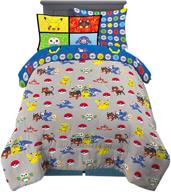Sleep Issues for Kids
Getting adequate, quality sleep is extremely important for a child's growth and development. However, many children struggle with different sleep issues that can disrupt their sleep and cause daytime problems. Common sleep issues seen in children include:
Insomnia
Insomnia is difficulty falling or staying asleep. Some causes of insomnia in children include:
- Stress or anxiety
- Sleep disorders like sleep apnea
- Medications that disrupt sleep
- Pain from illness or injury
- Caffeine or sugar consumption before bed
- Sleep environment issues like noise, light, or uncomfortable bedding
Nightmares and Night Terrors
Nightmares are scary, vivid dreams that jolt a child awake. Night terrors are episodes of screaming, crying, thrashing, sweating, or sitting up while asleep. Causes include:
- Stress, anxiety, trauma
- Fever or illness
- Lack of sleep
- Some medications
Sleepwalking and Sleeptalking
Up to 15% of children sleepwalk or talk in their sleep at some point. This tends to run in families and happens during deep sleep stages. Sleepwalking can be dangerous if the child wanders outdoors.
Bedwetting
Bedwetting, or nocturnal enuresis, affects 5-10% of 7 year olds. Causes include:
- Genetics
- Small bladder capacity
- Heavy sleeping
- Stress
- Urinary tract infections
- Diabetes
Difficulty Falling Asleep
Children may struggle to fall asleep at bedtime for many reasons:
| Cause | Explanation |
|---|---|
| Irregular sleep schedules | Inconsistent bedtimes and wake times disrupt the body's clock |
| Lack of daytime exercise | Physical activity helps promote sleepiness at night |
| Late afternoon/evening caffeine | Caffeine is a stimulant that interferes with sleep |
| Screen time before bed | Light from screens suppresses melatonin needed for sleep |
| Stress, anxiety | Worry and rumination make it hard to relax into sleep |
If your child struggles with sleep, talk to their pediatrician. Proper sleep hygiene, medication, or cognitive-behavioral therapy may help overcome sleep problems.
Another interesting products


38 Review

Nightmares and Night Terrors in Children
Nightmares and night terrors can create disruptive and frightening experiences for children during the night. Understanding the differences and causes of each can help parents know how to best handle these sleep disturbances.
Nightmares
Nightmares are scary, intense dreams that jolt a child awake. They usually happen later at night during REM sleep. Some common signs of nightmares include:
- Awakening suddenly in a panic
- Detailed recall of the scary or disturbing dream
- Difficulty returning to sleep after the nightmare
- Calling out, crying, or showing fear during the nightmare
For example, a 5-year-old who watched a scary movie before bed might have a nightmare about monsters attacking him, then wake up crying and cling to his parents.
Causes of Nightmares
Some common causes of nightmares in kids include:
- Stress or anxiety - starting a new school, bullying, family difficulties
- Fever, illness, or certain medications
- Traumatic events or abuse
- Death of a loved one
- Sleep deprivation
Nightmares tend to happen during periods of change, stress, trauma, or when overtired. They usually lessen over time as the child works through the stressor.
Night Terrors
Night terrors are different than nightmares. They are episodes of intense fear during which the child is still asleep. Signs include:
- Happen early in the night during deep sleep
- Loud screaming or crying
- Thrashing, kicking, eyes open but glazed over
- Sweating, breathing rapidly
- Difficult to wake or console during the episode
For instance, a 3-year-old might suddenly sit upright in bed crying hysterically but be inconsolable. After a few minutes, she lays back down and returns to sleep, with no memory of the event.
Causes of Night Terrors
Night terrors often run in families and have different causes than nightmares:
- Genetics - tendency can run in families
- Sleep deprivation
- Irregular sleep schedules
- Illness, fever, medication side effects
- Stress or overtiredness
Trying to wake the child during a night terror is difficult and can prolong the episode. Instead, make sure the area is safe and wait it out.
Managing Nightmares and Night Terrors
Strategies to help manage nightmares and night terrors include:
- Consistent sleep routine with regular bedtime
- Soothing bedtime routine - bath, massage, reading
- Ensure child gets adequate sleep
- Identify and address sources of stress
- Comfort and reassure child after episodes
- Consult doctor if episodes increase or severely disrupt sleep
With patience and consistent sleep routines, most children outgrow nightmares and night terrors. Seek medical advice if they persist or worsen over time.
Top products in 🧸 Kids' Bedding
Sleepwalking and Sleeptalking in Children
Up to 15% of children will sleepwalk or talk during sleep at some point in childhood. These behaviors can be alarming for parents, but are typically harmless. Understanding causes and handling episodes properly can help manage sleepwalking and sleeptalking.
Signs of Sleepwalking
Sleepwalking generally occurs in the first third of the night during deep NREM sleep. Episodes can range from simple to complex:
- Simple sleepwalking - sitting up in bed, looking around, laying back down
- More complex - getting out of bed, walking around house, eyes open but blank stare
- Very complex - leaving the house, driving, cooking, eating, inappropriate behaviors
Other signs of sleepwalking include:
- Difficult to wake during an episode
- No memory of the event
- Disoriented or confused when awakened
Causes of Sleepwalking
Sleepwalking appears to run in families and is tied to genetics and sleep structure. Other risk factors include:
- Having a sleep disorder like sleep apnea
- Sleep deprivation
- Sedative medications
- Stress, anxiety, trauma, fever
- Enlarged tonsils blocking airway
Safety Precautions with Sleepwalking
Because children are unaware and unresponsive during sleepwalking episodes, safety precautions are important:
- Secure windows and doors so child can't wander outside
- Gate stairways
- Remove tripping hazards
- Sleep on first floor if higher floors accessible
- Don't try to restrain or wake child during episode
Similar products
Handling a Sleepwalking Episode
When a child sleepwalks, follow these guidelines:
- Gently guide back to bed
- Don't try to wake child
- Speak softly using simple phrases
- Make sure child is safe, blocking exits if needed
- Allow episode to pass, child will usually return to normal sleep
Discuss the episode with child in the morning to offer reassurance.
Tips for Sleeptalking
Sleeptalking occurs when a child talks while still asleep, either comprehensible or incoherent. Suggestions include:
- Don't try to interact or have conversations
- Avoid waking child if not disruptive
- Gently reposition on side if loud snoring occurs
- Use white noise machine to soften speech
Reassure child sleeptalking is normal and they are safe.
When to Seek Help
Consult a doctor if sleepwalking or sleeptalking:
- Happens frequently each week
- Causes injury or high risk behavior
- Involves very complex behaviors
- Is accompanied by other sleep disorders
- Disrupts or impairs daytime functioning
With safety measures, patience, and good sleep habits, most children outgrow sleepwalking and sleeptalking behaviors.
Difficulty Falling Asleep in Children
Many children struggle with falling asleep at bedtime. Difficulty falling asleep, also called sleep onset insomnia, can negatively impact children's sleep quality and daytime functioning. Understanding the causes and using good sleep habits can help.
Common Causes
Reasons children may have bedtime struggles include:
- Irregular sleep schedule - inconsistent bedtime and wake times
- Lack of daytime exercise - activity helps prepare the body for sleep
- Caffeine, especially late in the day
- Screen time before bed - light exposure inhibits melatonin release
- Anxiety, stress, worries - inability to shut off mind
- Associating bed with discipline - not wanting to go to room
Signs of Bedtime Resistance
Common signs a child is struggling with sleep onset:
- Repeatedly getting out of bed
- Calling or crying out from room
- Asking for water, food, bathroom trips
- Trouble settling down - fidgeting, tossing and turning
- Curtain calls - saying goodnight over and over
Daytime Effects
The effects of difficulty falling asleep can persist into the daytime. These may include:
- Fatigue, low energy
- Headaches, stomach aches
- Irritability, behavior issues
- Hyperactivity
- Poor concentration, attention
- Accidents, injuries
Bedtime Routines
Establishing positive bedtime routines can encourage better sleep onset. Useful habits include:
- Consistent bedtime schedule
- Soothing pre-bed activities - bath, reading
- Comfortable, cool, and quiet sleep environment
- Limiting caffeine, especially after noon
- No TV, phones, or screens before bed
- Relaxation techniques - deep breathing, visualization
When to Seek Help
Talk to your pediatrician if your child's sleep onset struggles:
- Persist most nights for over a month
- Cause excessive daytime fatigue
- Disrupt behavior at home or school
- Require a parent to be present at bedtime
- Result in sleep duration less than recommended for child's age
The doctor can check for underlying issues and provide sleep training guidance or referrals if needed.
Tips for Peaceful Sleep Onset
| Age | Bedtime Tips |
|---|---|
| Toddlers | Consistent bedtime routine, transitional object, limit night feedings |
| Preschoolers | Positive associations with bed, creative imaginative techniques |
| Grade school | Bedtime fading, relaxation methods, brief check-ins |
| Teens | No caffeine after lunch, limit evening lights/screens, mindfulness |
Being consistent and setting up a relaxing bedtime environment can help children of all ages improve their ability to fall asleep.
Benefits of Quality Kids Bedding
Choosing comfortable, high-quality bedding is essential for your child's healthy sleep and development. Quality kids bedding provides many important benefits:
Improved Sleep
Good bedding helps children sleep better at night. Features that enhance sleep include:
- Breathable fabrics like cotton to reduce overheating
- Snug, gentle fit to avoid discomfort
- Soft, high thread count sheets for cozy feel
- Warmth without being too hot
For example, a 2-year-old is much more likely to resist bedtime if sleeping on scratchy, pilly sheets versus soft flannel sheets that feel good against her skin.
Comfort and Coziness
High-quality bedding provides comfort, especially for kids who struggle with:
- Anxiety - weighted blankets provide gentle pressure
- Sensory issues - extra soft fabrics help sensitive skin
- Nightmares or fears - cozy bedding creates a safe space
A weighted blanket helped a 5-year-old scared of monsters sleep better by giving him a comforting hug-like feeling at night.
Safety and Security
The right bedding promotes safety:
- Breathable to reduce SIDS risk
- Snug-fitting sheets stay in place
- Coordinated sets avoid loose blankets in crib
- Organic materials limit chemical exposure
Using an organic cotton crib sheet will allow your baby to sleep safely without risk of chemicals disrupting her sleep or development.
Creativity and Self-Expression
Fun kids bedding allows your child to showcase his unique personality:
- Themed sets featuring favorite characters or animals
- Colorful, playful designs and prints
- Monogramming and personalization options
- Wide variety of patterns and textures
Let your 8-year-old pick rocket ship sheets to fuel his interest in space and science.
Durability and Longevity
High-end bedding is made to last through many washes and nights of use:
- Natural fibers like cotton and wool
- Tightly woven fabrics
- Reinforced stitching
- Stain-resistant materials
- Easy care - machine wash and dry
Choosing bedding made with long-lasting materials will allow it to endure your child's use through the years.
Investing in comfortable, safe, high-quality bedding pays off by encouraging better sleep for your child's health and happiness.
How To Choose The Right Bedding For Your Child's Room??
Choosing the right bedding for your child's room can be a daunting task, but it doesn't have to be. Here are some tips to help you make the best decision:
What Are The Best Materials For Kids' Bedding??
When it comes to choosing the best materials for kids' bedding, there are several options to consider. Here are some of the most popular materials recommended by experts:
When choosing the best material for your child's bedding, consider their age, preferences, and any allergies they may have. It is also important to choose high-quality materials that are durable and easy to care for.
What Are The Pros And Cons Of Cotton Vs Polyester Bedding For Kids??
Here are the pros and cons of cotton vs polyester bedding for kids:
Cotton bedding:
Polyester bedding:
When choosing between cotton and polyester bedding for kids, consider their age, preferences, and any allergies they may have. Cotton bedding is generally more comfortable and hypoallergenic, but it can be more expensive. Polyester bedding is more affordable and durable, but it may not be as breathable or comfortable.



















